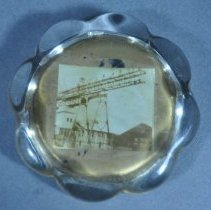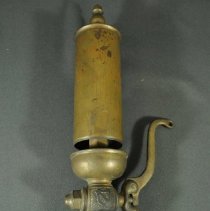Search Term Record
Metadata
Name |
National Portland Cement Co. |
Details |
NATIONAL PORTLAND CEMENT COMPANY There are images and information about the National Portland Cement Company works in the book A HISTORY OF THE TOWN OF DURHAM 1842-1994, pp. 140-144. Lakes near Durham had deposits of marl in them, and in the early 1890s, Mr. Neil McKechnie began to research the potential for establishing a cement factory. He secured business investors and also obtained a government analysis of the local marl. The February 14, 1900 edition of the DURHAM REVIEW reported that the company had been formed, and that the town had donated a 20-acre site for the industry. The steam-powered plant that was built was coal-fired to supply the electricity needed. The power house was 103 feet by 74 feet. The company's warehouse was 144 feet x 72 feet and had a capacity to hold 100,000 barrels of cement. The company also had their own railroad equipment, with a rail line to Wilder's Lake, where marl was dredged. In April, 1901, the company employed about 150 people. In 1905, the cement plant closed temporarily, as the manager stated that the marl at Wilder's Lake was exhausted. However, it appears that the Durham plant made a high-quality and very in demand Portland cement product that was in competition with American-made cement, and there was a Michigan cement plant that wanted the Durham plant closed down. At least one of the directors of the National Portland Cement company had a financial investment in the Michigan plant, so that caused some dissension. In 1906, some new directors were elected, who tried to keep the Durham plant going. That year, the cement factory produced 260,000 barrels of cement. However, a cheaper process for making cement had evolved, and plants world-wide were switching from using marl as their raw material, to using hard rock instead. The National Portland Cement Company closed circa 1915. It briefly tried to run again in 1917, but the maket was flooded with cheap cement around then, and the Durham cement factory closed down permanently, on ____, 19__. The buildings were idle until 1920, when the property was purchased and the machinery sold off. |




